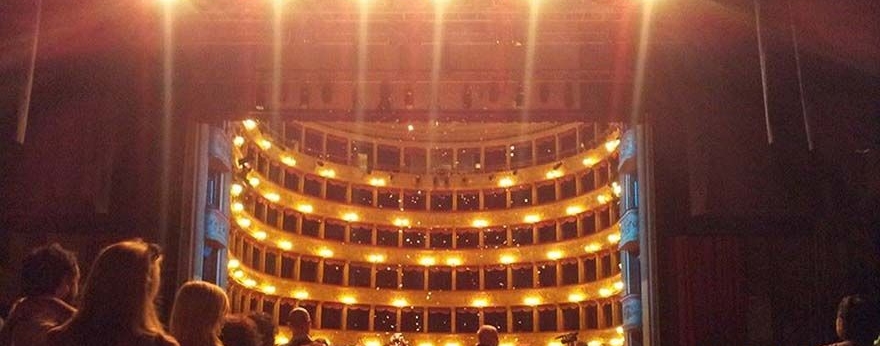
News
-
Giudizio Universale. Michelangelo and the secrets of the Sistine Chapel
An incredible international production, where the theatrical performance is combined with the special effects curated by Marco Balich, creator of the most admired Olympic cermonias, the music of Sting and the voice of Susan... [continue] -
Opera. The Italian Passion
The Teatro dell'Opera di Roma, a.k.a. Teatro Costanzi, is one of the most important Opera houses in the world. Built in the late XIX century, it has been remodeled in the 1950's. It held the premieres of Mascagni's Cavalleria Rusticana... [continue]
Rome has always been a city linked to music, from the Renaissance onwards: a city where you can retrace great moments of musical history.
After having walked the Via di Campo Marzio, where Giuseppe Verdi lived during his Roman stays, we pass in front of the Teatro Valle, the oldest among those still in use, dominated by the dome of the church of St.Ivo, to arrive in front of the Teatro Argentina.
This eighteenth-century theater stands in front of the remains of the ancient Roman temples, nearby the place of Julius Caesar’s murder, and was the site of the premiere of the Barber of Seville, the masterpiece by Gioachino Rossini, as well as two operas by Verdi.
Then we proceed towards the church of St. Andrea della Valle, a masterpiece of Roman baroque, and set of the first act of Giacomo Puccini’s Tosca.
Remaining in the Puccini’s atmosphere, we cross the market of Campo de’ Fiori (open only in the morning) to reach the gorgeous Palazzo Farnese, where the second act of Tosca takes place.
Then, walking along the picturesque streets of the center of Rome, you arrive in front of the church of St. Maria in Vallicella and the beautiful Oratorio dei Filippini, where the musical tradition of the oratory was born.
From here you reach the Tiber, where a plaque marks the location of the former Teatro Apollo (also known as Tordinona): in this ancient theater took place the premieres of the Trovatore and of the Ballo in Maschera by Giuseppe Verdi.
Finally, crossing the Tiber on the most beautiful roman bridge, with its angels created by Bernini, we end our tour in front of the Castle of the Holy Angel, once imperial mausoleum, then medieval fortress, where Puccini set the location of the dramatic end of his Tosca: the heroine, after having witnessed her lover Mario’s death, jumps down from the ramparts of the Castle.




